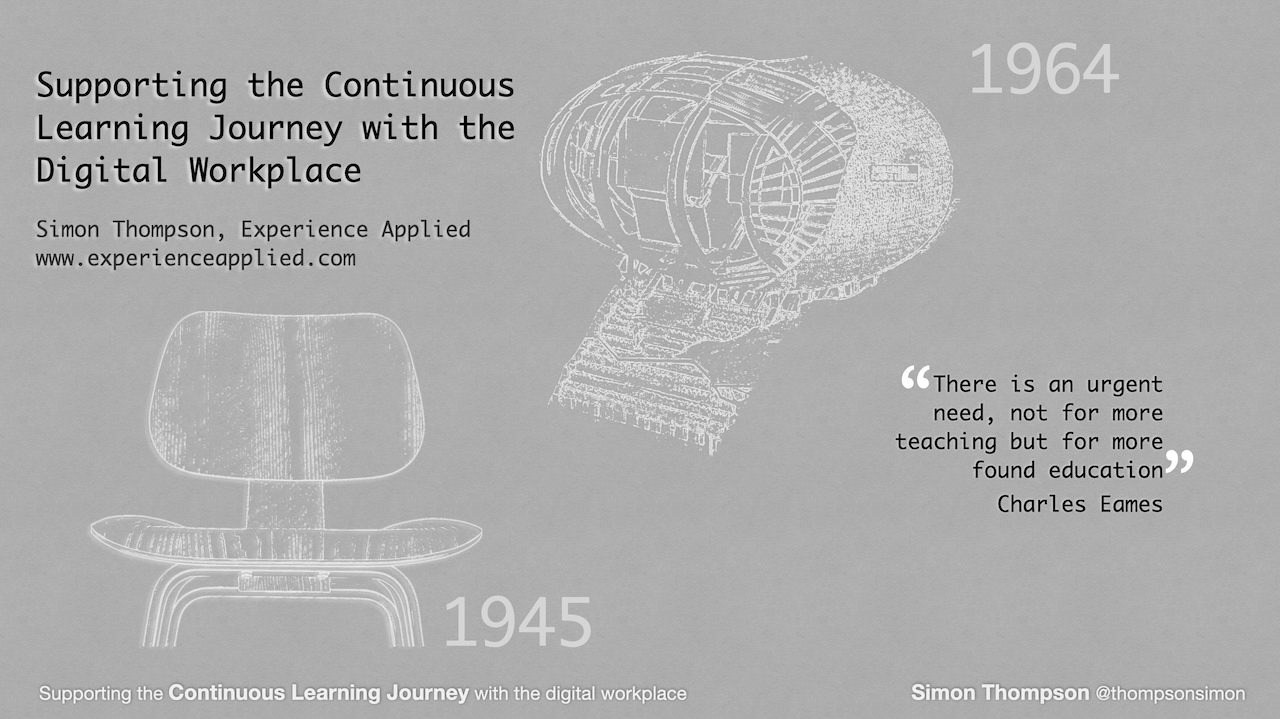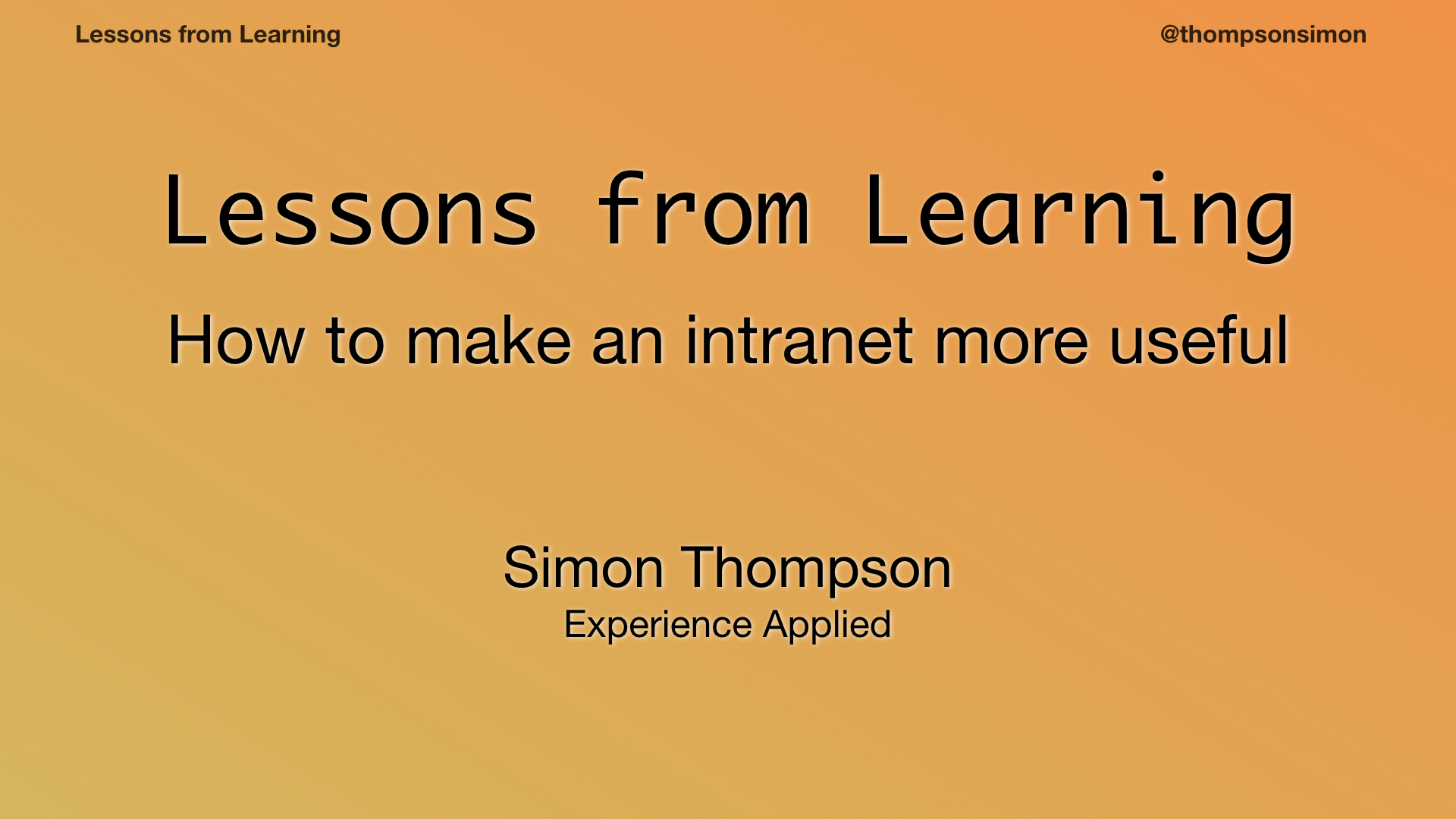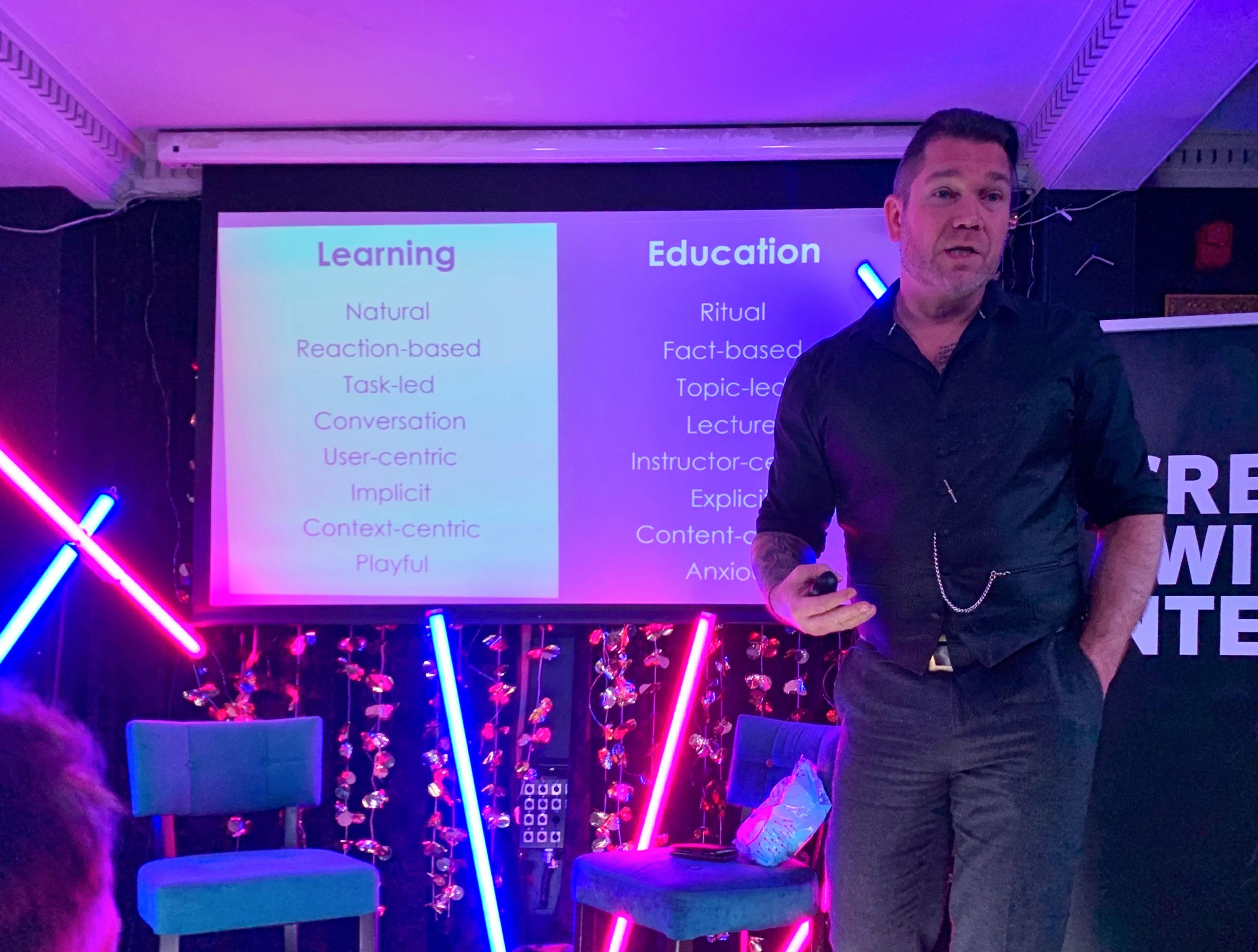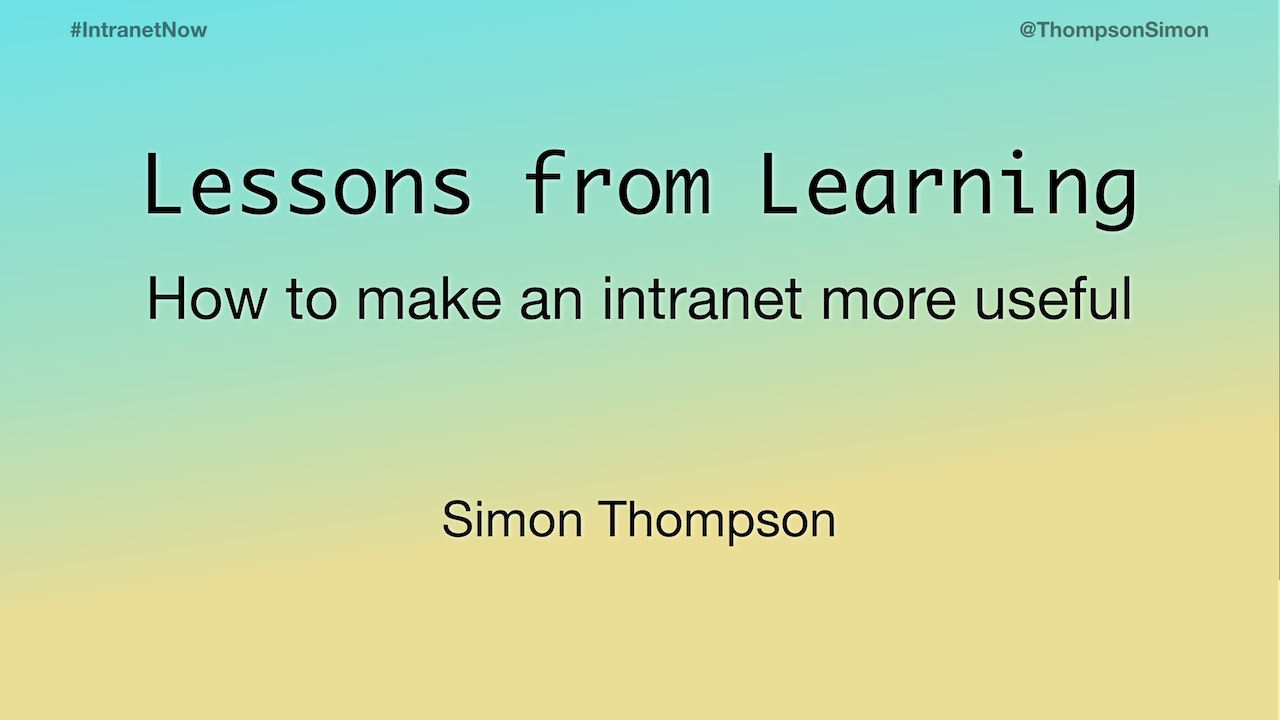Category: Learning
-
Digital Work Disruption 2020
My slides from the Digital Work Disruption conference on 26 August 2020. Find out more about my exploration of intranets and workplace learning in Lessons from Learning – the post Please feel free to leave feedback on this page.
Written by
-
Learning Technologies – a digital workplace perspective
Last week I got to spend a day and a half at the Learning Technologies exhibition in London, and had many interesting conversations. As I’ve commented before, learning tech feels like a strange parallel universe where intranets barely exist, so would this year’s show be different? Something borrowed, something blue There is a concern in
Written by
-
Lessons from Learning – the post
In 2019, I was thrilled to be invited to present my talk Lessons in Learning to the IntraTeam conference in Copenhagen. This is a summary of the majority of the talk, where I argued that intranet professionals need to pay more attention to learning and development. This talk originates a year before at IntraTeam Event
Written by
-
Everything you know about learning is wrong…and what might that mean?
Nick Shackleton-Jones is an entertaining and occasionally puckish speaker, and kept the Brighton audience for last night’s Tilt Talk on their toes with jokes, challenging questions, short activities and giant marshmallow-throwing. And that wasn’t just playfulness, but illustrating one of Nick’s key points about how people learn: that we are much more likely to remember
Written by
-
IntraTeam 2019 in summary
PLEASE NOTE: I am currently adding extra links and presentations where I find them publicly available. This page may change over the next few days. After three days of workshops and conference at the IntraTeam Event 2019 at the Radisson Blu Scandinavia Hotel in Copenhagen, I was exhausted, unable to take any more information in,
Written by
-
Lessons from Learning – IntraTeam 2019
Lessons from Learning (IntraTeam Conference, Copenhagen 2019) by Simon Thompson from Simon Thompson Further links, reference materials, and slides will appear here. References Jane Hart’s Seamless Working and Learning www.modernworkplacelearning.com/cild/introduction/a-working-and-learning-environment/ Josh Bersin: The Hybrid Jobs Revolution joshbersin.com/2019/01/want-to-make-more-money-join-the-hybrid-jobs-revolution/ Please see Intranet Now 2018: Lessons from Learning for further references used in this presentation.
Written by
-
Intranet Now 2018: Lessons from Learning
Thank you talk all of the attendees to Intranet Now 2018 for your contribution to the event. Here are my slides from the event, on the subject of how the integration of learning can make an intranet more useful. Lessons from Learning: How to make an intranet more useful (Simon Thompson/Intranet Now 2018) I would
Written by
-
Learning Technologies 2018
In 2015, I attended the Learning Technologies show at Olympia, London, to try to better understand what was happening in an area adjacent my world of intranets, and what could be learned to improve the already award-winning Barclays Global Curriculum project. What I found was less adjacent, and more parallel. It felt like I was in
Written by






